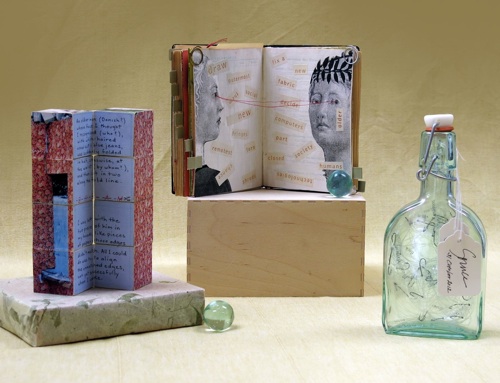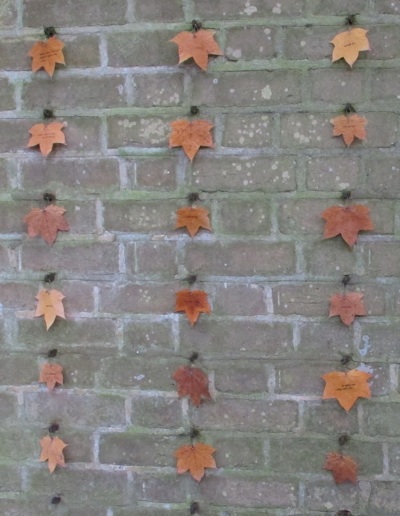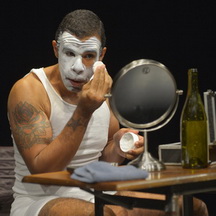Book arts: playful mediums, dream-like messages.
The flowering of a genre is well illustrated in “Sisters of Invention,” a show that ended last Sunday, Jan. 10 at SF’s Center for the Book. Following the 45-year-long careers of three pioneering book artists – Jaime Robles, Sas Colby and Betsy Davids – this show asks deep questions and provides some delightfully small answers.
Among them is the seductive power of book arts in the terrain between pure text and art.
It is a strange and elusive art form, with paintings folded into books and books turned into paintings, an art form that is deftly composed and at times shockingly personal. In this show, some texts were linear, a short story or journal entry. Others were found texts or fragmented bits or words taken out of context, a celebration of terse poetry, banal lists and webby allusions.
And the images that joined these texts were just as varied. Chopped and folded maps traced a path between the personal and the larger world. A painted-over daily planner caught the creative impulse like flies in amber, and collages turned detritus into prayer.
Here one could pause before a soft book with sewn language or peer into a bottle full of typed words and fishhooks.
 Many of these are works that burst the boundaries of a traditional book. Jaime Robles’ poems after the death of her mother floated in beeswax, suspended over votive candles where the heat slowly melted them away.
Many of these are works that burst the boundaries of a traditional book. Jaime Robles’ poems after the death of her mother floated in beeswax, suspended over votive candles where the heat slowly melted them away.
Betsy Davids’ Unfoldings was constructed of hinged flexicubes that unfolded to reveal a dream journal and journey, the folded sides of our own lives. And Sas Colby’s “The Poet’s Tool Box” included found objects that a poet might require: stones, bones, rope, and candle. Just titling it “the poet’s tool box” was a laughing look at metaphor and a serious comment on the geologic nature of language.
These three artists have known each other for decades, and it was fascinating to see how their personal passages helped to shape the discourse of this genre, a coming of age for book arts. While many of the works explored the limitations and freedoms of a medium, there was another thread through this show, the distinctive voice of women in the arts. And like the parallel discourse in society, these threads are deeply felt.
One clue to that undercurrent is the domesticity that shapes some of these objects. In Betsy Davids’ series of Journalbooks, there is a blurring between collage and quilt and a sense that the book is alive and swaddled. These are dream passages, and the quilted covers become bed covers, opening into a soft pagination of sleep.
Sas Colby’s background in fabric arts bloomed in the mixed media of book arts, with revealing texts stitched in a spidery hand, while Jaime Robles printed holiday greeting cards on actual tortillas.
Besides references to the domestic there is an oblique sense of women’s art in the feeling of genealogy and community, in views out of a window, in the art of ephemera. Robles’ use of the ephemeral is striking in Autumn Leaving, where poem fragments are printed on leaves.
 These are objects that resonate deep.
These are objects that resonate deep.
The SF Center for the Book offers 400 workshops each year on letterpress and on making artists’ books. Their next show is “Without Type: the Dynamism of Handmade Letters” opening Jan. 22 with a reception. Information at sfcb.org.
—Adam Broner
Photo top of three books from “The Sisters of Invention” by (from left) Betsy Davids, Sas Colby and Jaime Robles; photo courtesy of SF Center for the Book. Photo bottom of Autumn Leaving by Jaime Robles.
